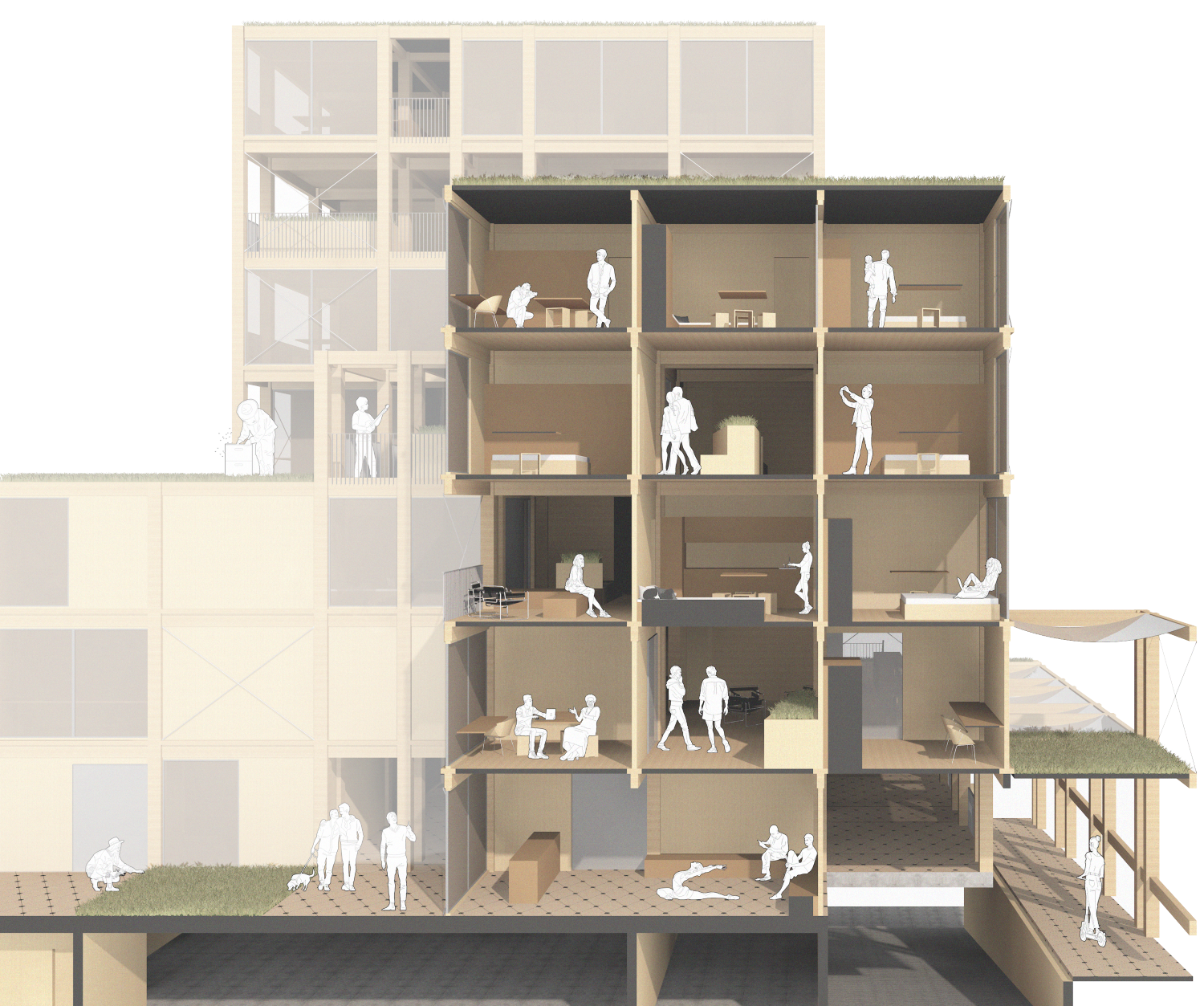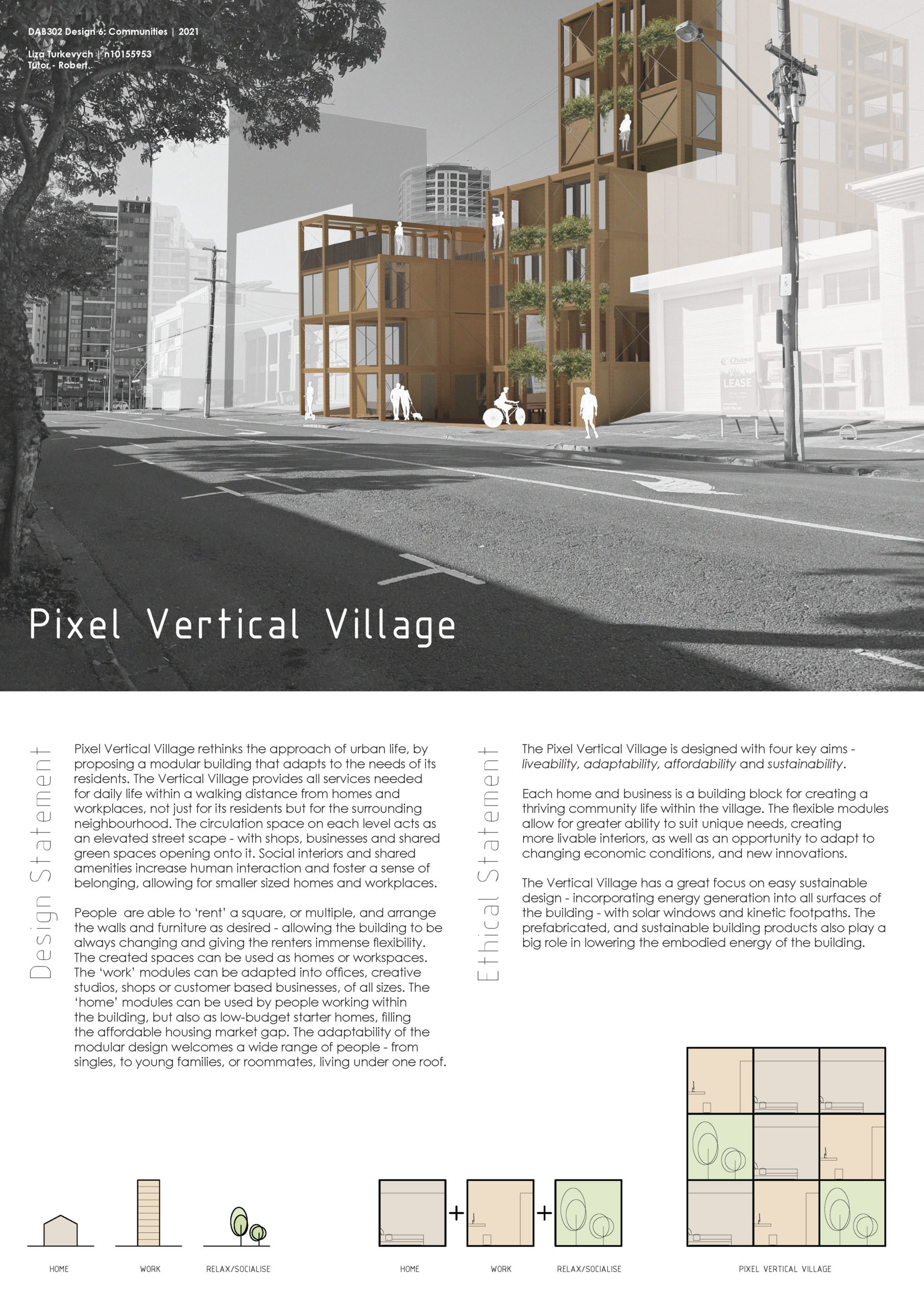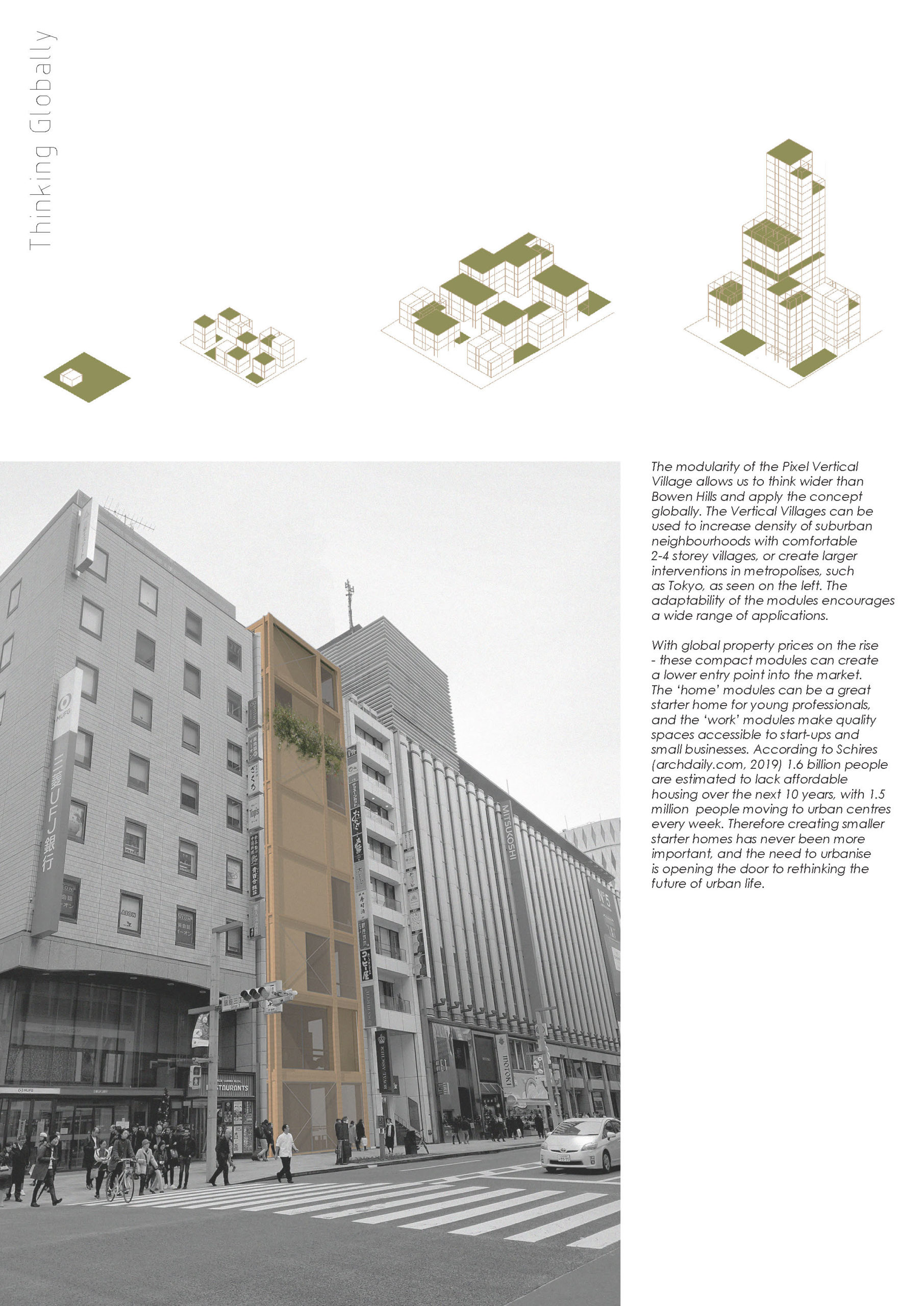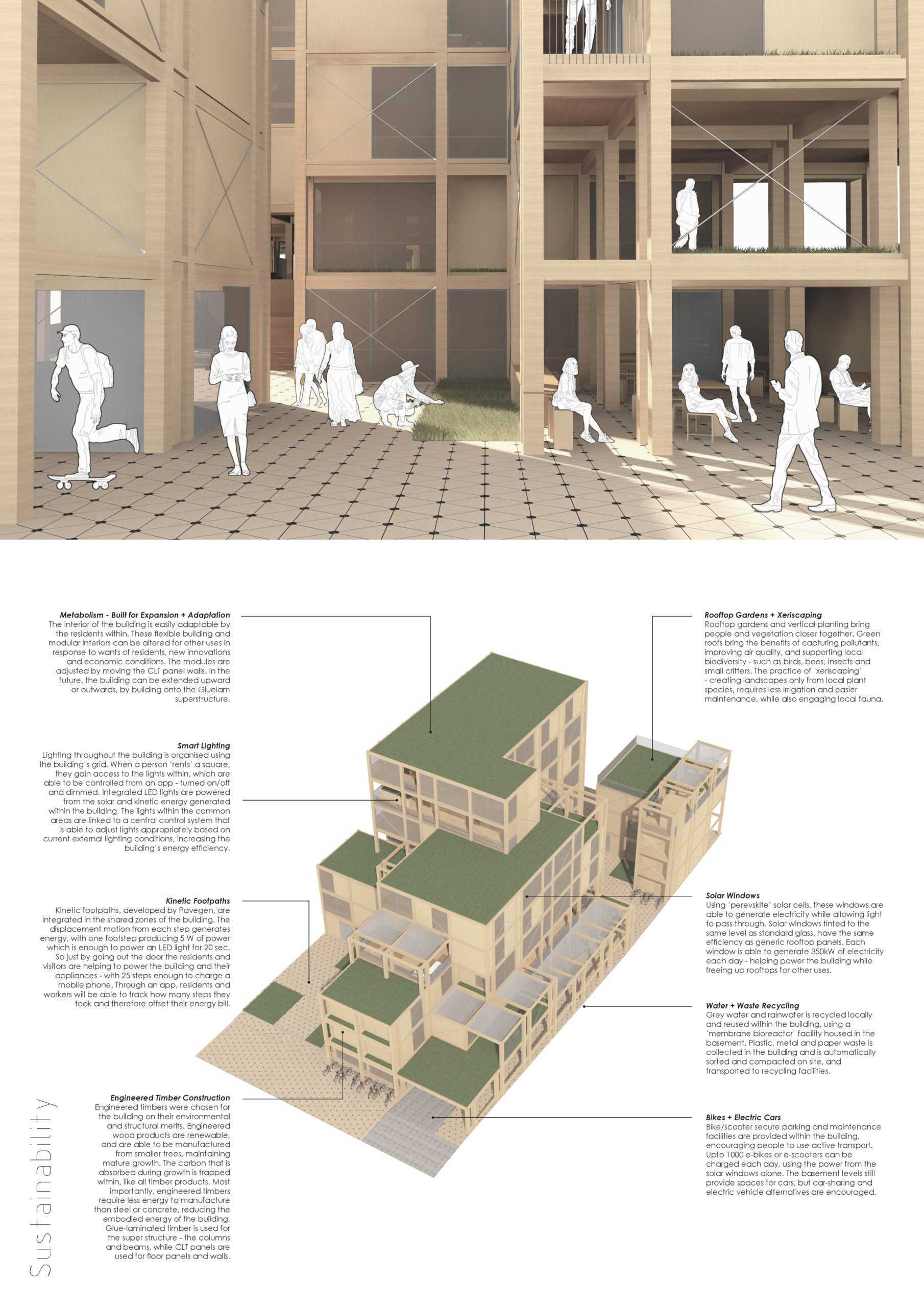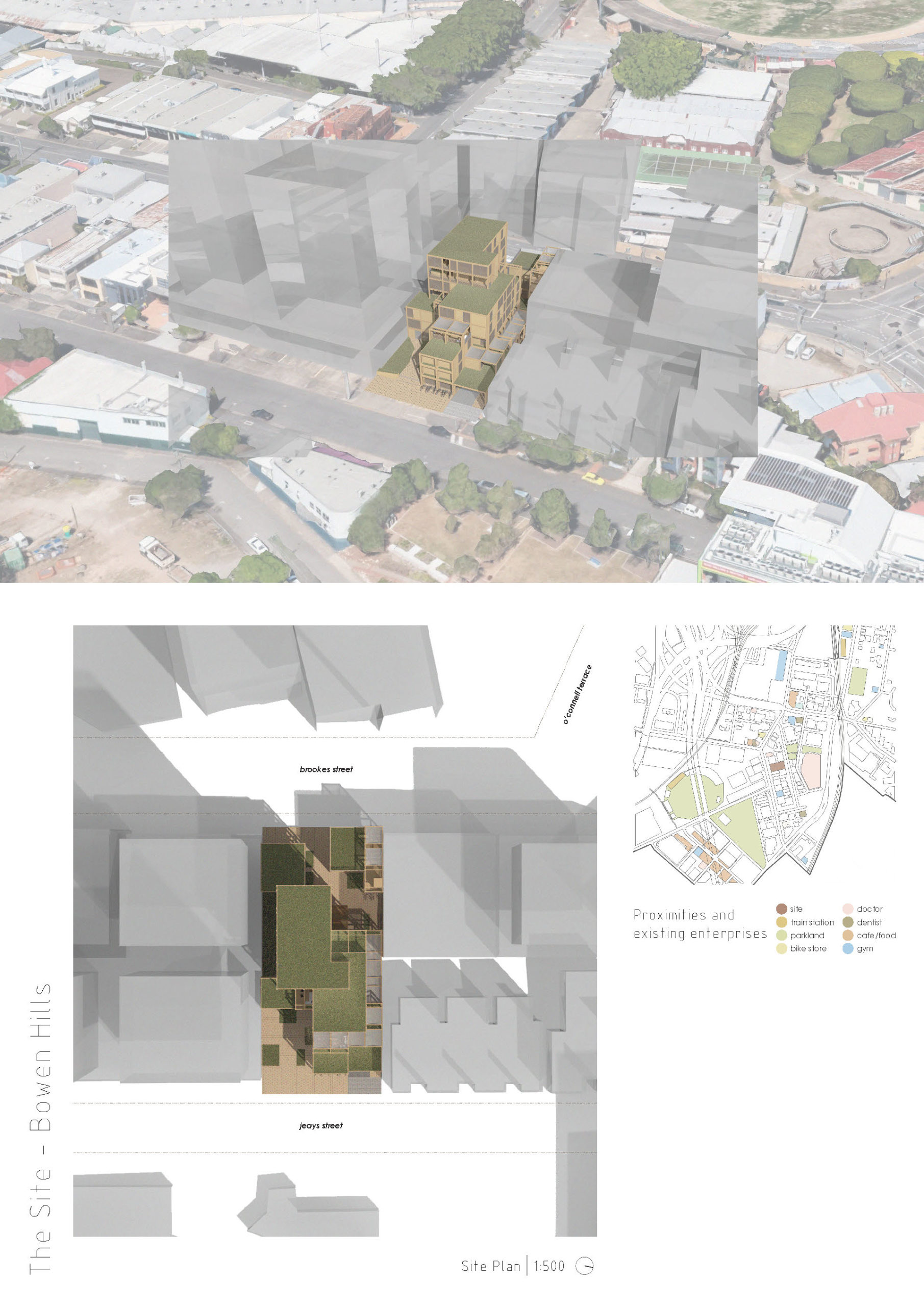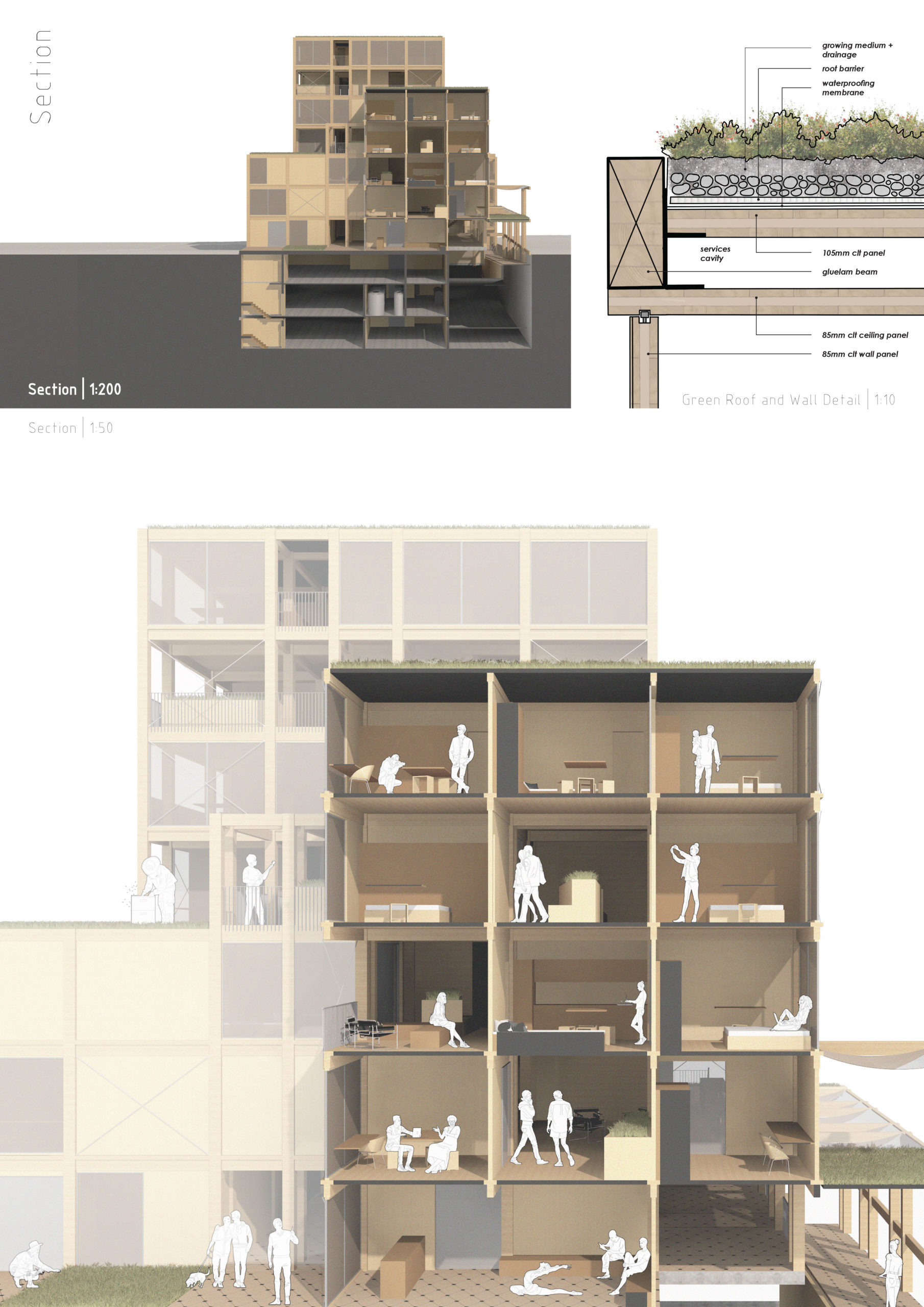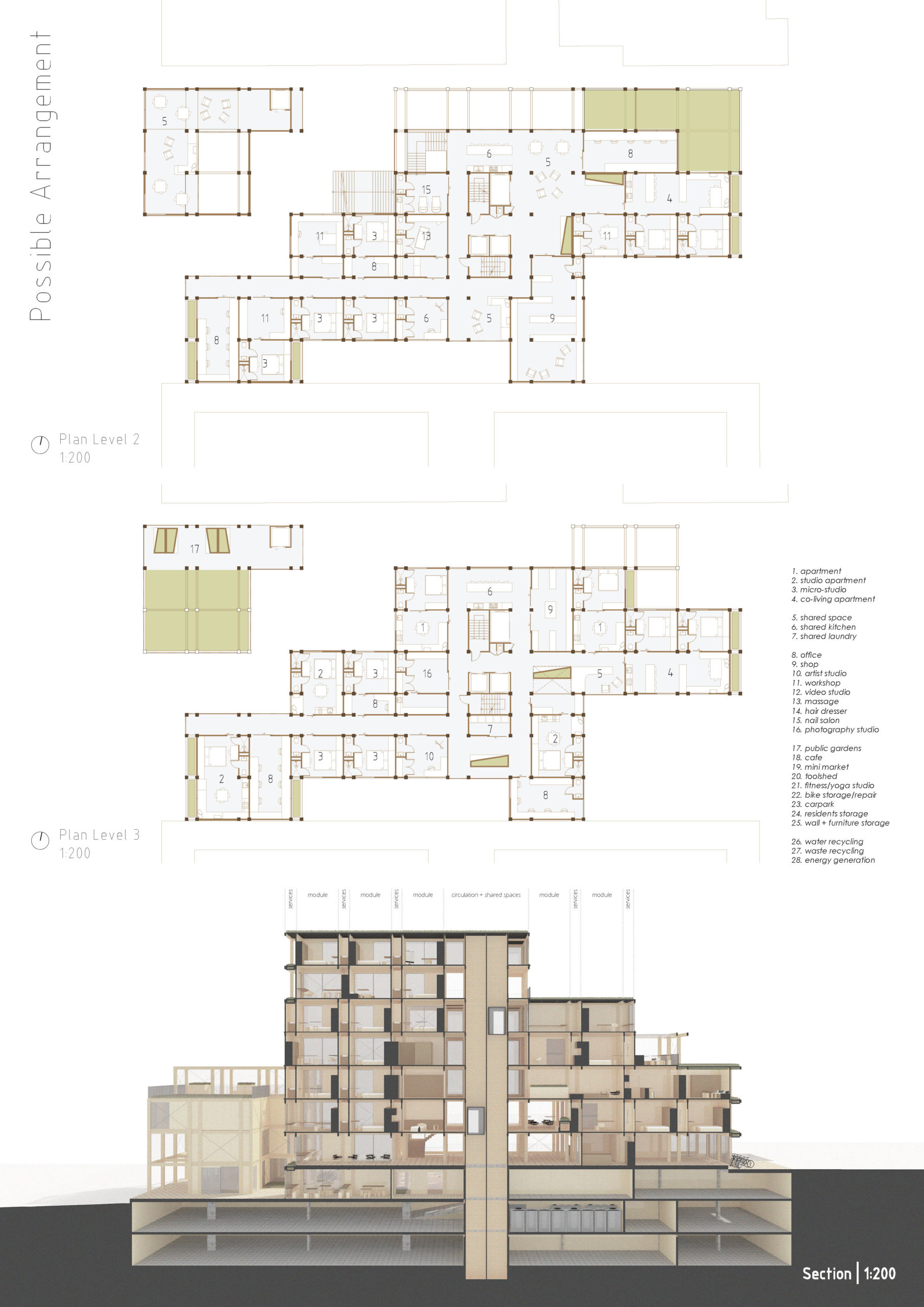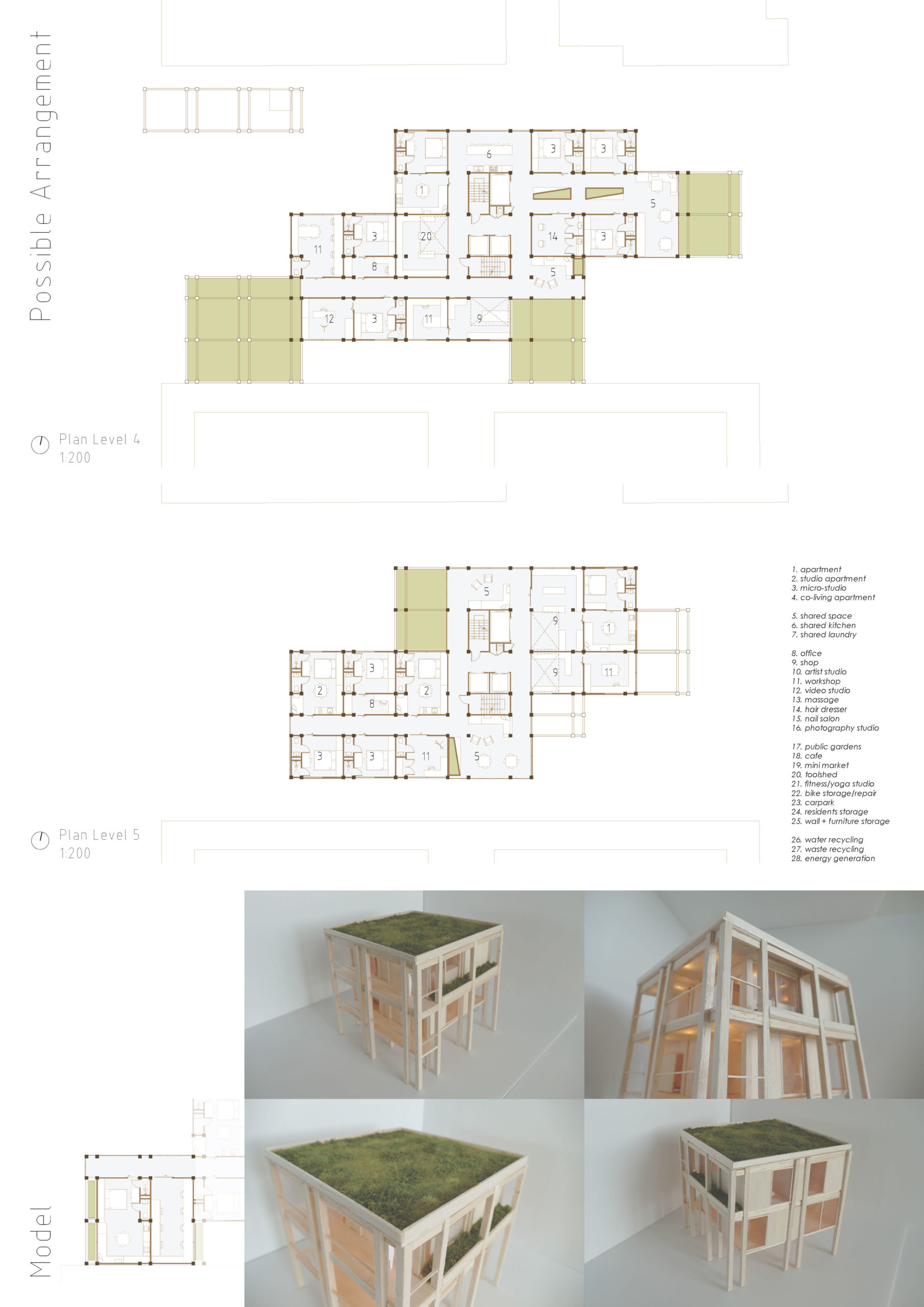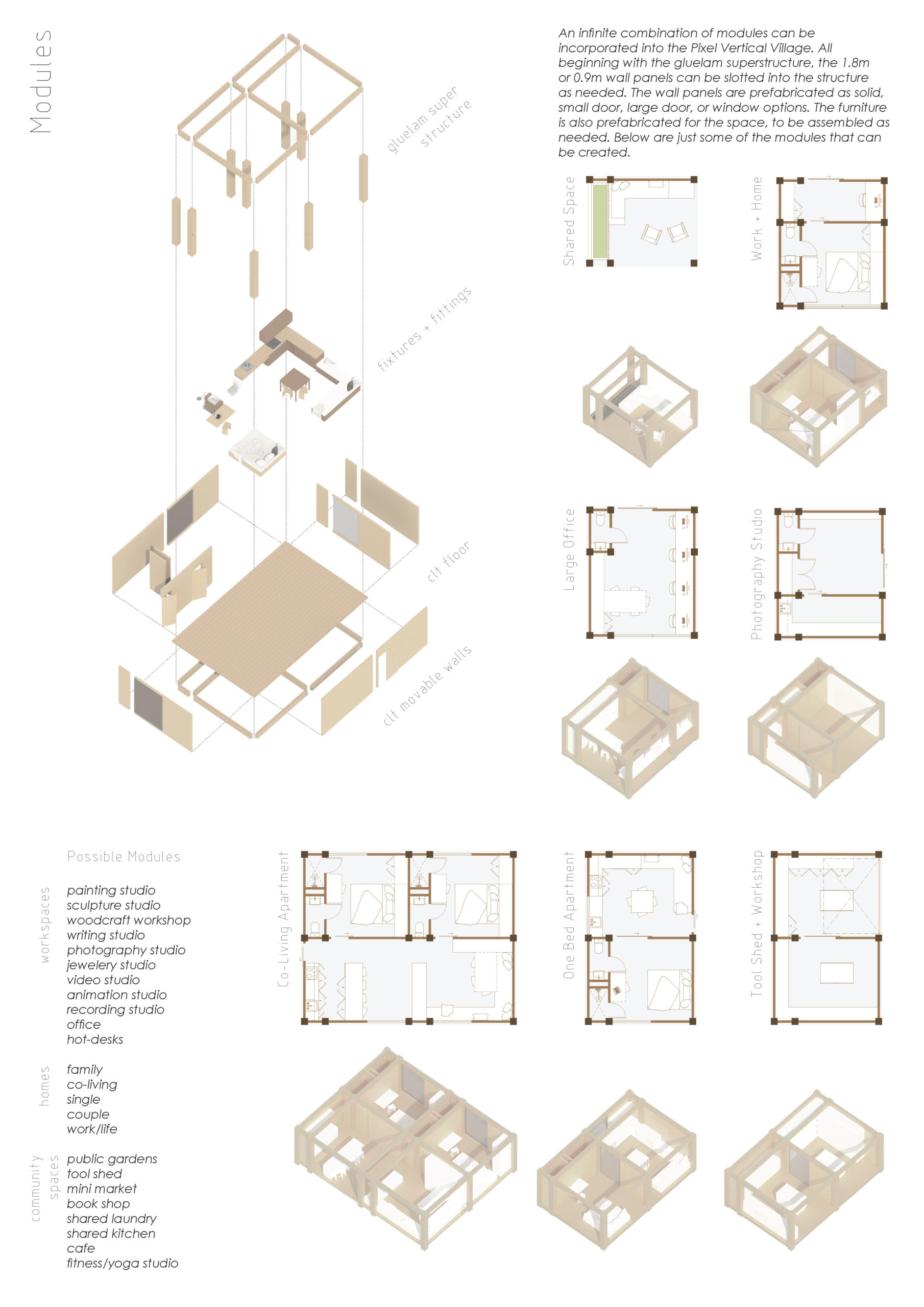Pixel Vertical Village rethinks the approach of urban life, by proposing a modular building that adapts to the needs of its residents. The Vertical Village provides all services needed for daily life within a walking distance from homes and workplaces, not just for its residents but for the surrounding neighbourhood. The circulation space on each level acts as an elevated street scape – with shops, businesses and shared green spaces opening onto it. Social interiors and shared amenities increase human interaction and foster a sense of belonging, allowing for smaller sized homes and workplaces.
People are able to ‘rent’ a square, or multiple, and arrange the walls and furniture as desired – allowing the building to be always changing and giving the renters immense flexibility. The created spaces can be used as homes or workspaces. The ‘work’ modules can be adapted into offices, creative studios, shops or customer based businesses, of all sizes. The ‘home’ modules can be used by people working within the building, but also as low-budget starter homes, filling the affordable housing market gap. The adaptability of the modular design welcomes a wide range of people – from singles, to young families, or roommates, living under one roof.
The Pixel Vertical Village is designed with four key aims – liveability, adaptability, affordability and sustainability.
Each home and business is a building block for creating a thriving community life within the village. The flexible modules allow for greater ability to suit unique needs, creating more livable interiors, as well as an opportunity to adapt to changing economic conditions, and new innovations.
The Vertical Village has a great focus on easy sustainable design – incorporating energy generation into all surfaces of the building – with solar windows and kinetic footpaths. The prefabricated, and sustainable building products also play a big role in lowering the embodied energy of the building.
The modularity of the Pixel Vertical Village allows us to think wider than Bowen Hills and apply the concept globally. The Vertical Villages can be used to increase density of suburban neighbourhoods with comfortable 2-4 storey villages, or create larger interventions in metropolises, such as Tokyo, as seen on the left. The adaptability of the modules encourages a wide range of applications. With global property prices on the rise – these compact modules can create a lower entry point into the market. The ‘home’ modules can be a great starter home for young professionals, and the ‘work’ modules make quality spaces accessible to start-ups and small businesses. According to Schires (archdaily.com, 2019) 1.6 billion people are estimated to lack affordable housing over the next 10 years, with 1.5 million people moving to urban centres every week. Therefore creating smaller starter homes has never been more important, and the need to urbanise is opening the door to rethinking the future of urban life.


